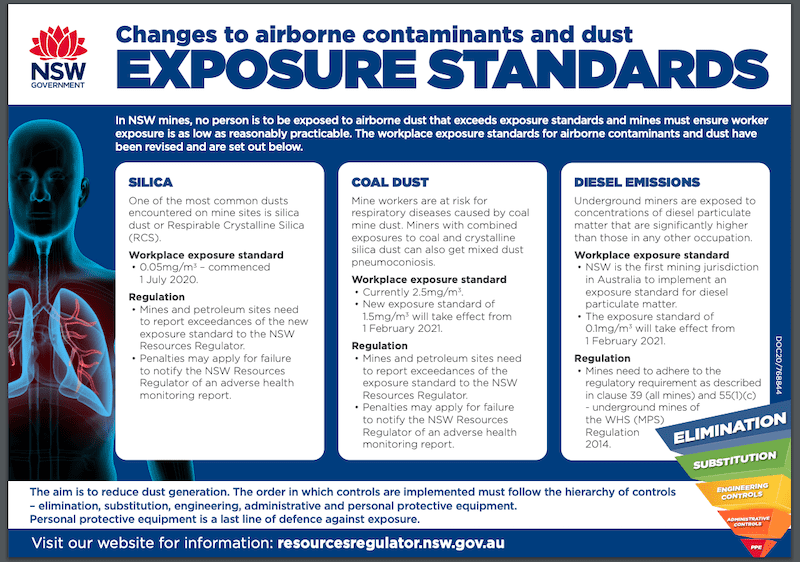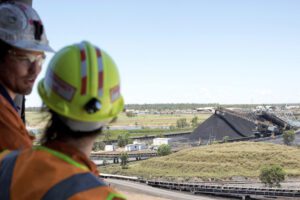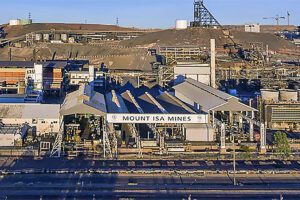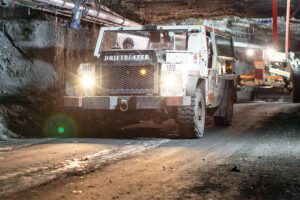The NSW Resources Regulator stated, on 1 February 2021 both the new worker exposure standards for respirable coal dust (1.5mg/m3 of air) and diesel particulate matter (0.1mg/m3 measured as sub-micron elemental carbon) will commence.
An airborne contaminant is a fume, mist, gas, vapour, dust or other microorganism that is a potentially harmful substance to which individuals may be exposed in their working environment.
WA amendments to assist early detection of silicosis
New diesel workplace exposure standard starts
Airborne contaminants are generated during mining activities and can be a risk to a person’s health if not properly managed. Individuals can be exposed to dust on a mine site, with activities such as cutting or grinding, abrasive blasting, hauling, mucking, tipping, and crushing, having the potential to create unacceptable dust exposures if not controlled properly. Substantial dust can be generated during drilling operations, particularly if undertaken in dry conditions. Also, workers can be exposed to dust from dried spilled material or generated from tailings storage facilities, product stockpiles and during the loading of broken material and product transfer.
The aim is to reduce dust generation. The order in which controls are implemented must follow the hierarchy of controls – elimination, substitution, engineering, administrative and lastly personal protective equipment. Personal protective equipment is the last line of defence against exposure.
For further information visit web page on airborne contaminants.
Read more Mining Safety News














Add Comment